
Google Docs is getting some updates! Keep up to date with this core tool in the Google Workspace productivity suite. Here are some new Google Docs features we're excited about.
For many of us Google Docs provided us with our first user experience with Google's productivity suite -- Google Apps, then G Suite, now Google Workspace ...
It was similar enough to Microsoft Word that we felt comfortable using it. But it added some unique features -- real-time collaboration, version history, etc. I know everyone remembers the first time they saw that anonymous chupacabra pop up and realize your colleague was typing at the very same time you were. Add that autosave feature... life changing!
But over the years it felt like Google Docs kind of got left in the dust. While other apps got new and cool upgrades, Docs was kept more or less the same.
Well, Google has finally given Google Docs some much-needed love.
It's recently rolled out several new features that make this word processing tool shiny and new.
Here are some Google Docs updates we're excited about:
Smart Chips
Google has been working on transforming the way people collaborate in Google files with the introduction of smart canvas. Smart chips is a big part of that transformation.
Smart chips allow users to easily tag people, files, places and more inside of your files -- including Google Docs. Where there’s a smart chip in your document, you and other users who have access to the document can hover or click on a chip to get more information quickly and easily.


Files
Smart chips allows users to add links to documents, images, and tables within their text. For example, if you mention a Google Sheet in your document, you can now link to it directly without having to copy and paste the URL. This feature makes it easier to reference other files and folders your doc.
To insert a file type the @ symbol then type in the name or part of the name of the document. Hovering over the name of the file will open a small window where you can see an image of the document from there you can click to open a preview (docs, slides) or open the entire document (docs, slides, drawings, sheets).


People
Type @ then a person’s name into your document to bring up the search menu. People you commonly interact with pop up first. You can search for someone whose chip you can add. Once that person's smart chip is inserted, you can click on it to bring up a display window with the name and email address. You can also quickly email, chat, video call, schedule a calendar event or add.
You can open detailed view to see contact details, recent interactions and shared files. Note: This Smart Chip seems to work best when you type the name on a separate line.


Maps/Places
Type @ then the name of a location to bring up the search bar with a list of possible matches. You can then click on your desired location and insert that smart chip into the doc.
By clicking on the smart chip you can display a Google Maps preview inside of your Google Doc. You also have the option to open a larger window larger map including images, directions, copy the address and a link to the location.

Dates
Insert the date into a document by typing @ and the date. You can choose the format of the date and book a meeting inside of your Google Doc. You can type times like @yesterday, @today, @June 15, 2023. Once the date chip is inserted you can click on it to book a meeting for the given date. You can also click on the gear icon to choose the format you want the date to be displayed.
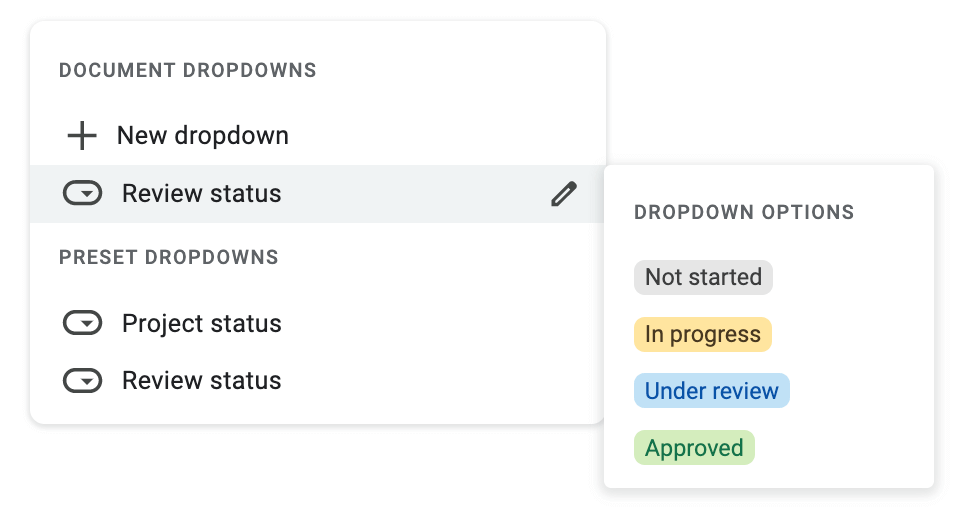
Dropdown
Insert a dropdown into a document by typing @dropdown. This will open up a menu of preset dropdowns and the option to create a new dropdown. If you create a new dropdown, you can change the dropdown template name and edit the options before you save.
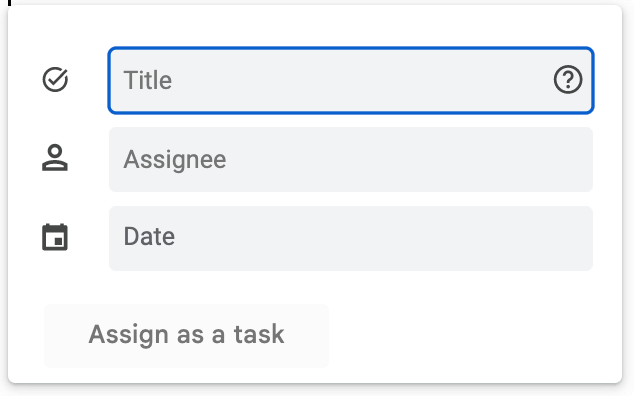
Tasks
The task smart chip allows you to easily assign a specific task to a specific person on a specific date. To assign a task type @task then fill in the information and assign the task.
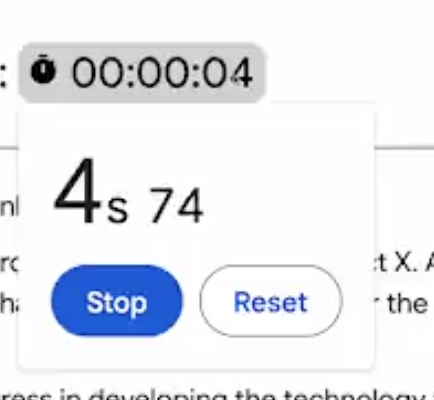
Stopwatch
The stopwatch chip allows you to start, stop, and reset the timer as needed. You can insert a stopwatch chip in Docs by either typing “@” followed by “Stopwatch” or going to Insert > Smart chips and choosing Stopwatch. Note: This feature is just being rolled out (as of publication of this post) so it might not be available in your Google Doc just yet.
Building Blocks
Building blocks are pre-made templates that help you track projects, files, and more. They can be inserted into a variety of different file types. They can save you time from creating them from scratch. Plus, they might include things you might not have thought of yourself!
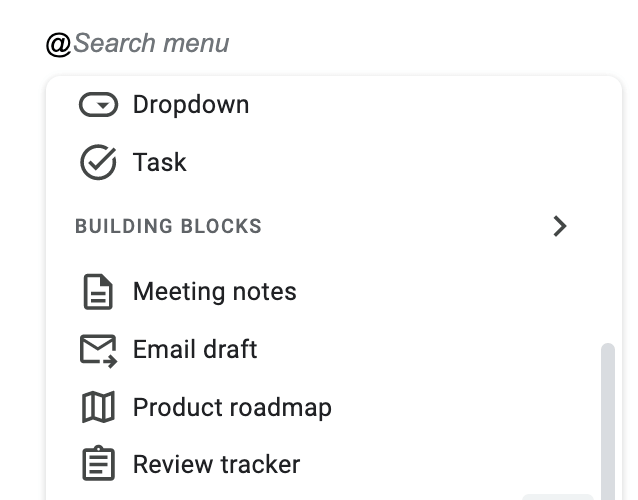
Meeting notes
Meeting notes let you add a document to your a meeting in Google Calendar. It uses a pre-made template to add sections for attendees, objective, notes, and action items.
Here's how to add the meeting notes template to your document:
- Type @ then click on Meeting notes under building blocks.
- Click on an event or search for an event and click on it. Meeting notes are pre-populated with event details but aren't attached to the event.
- If you’re the meeting organizer a pop-up will prompt you to share and attach the document to your event and you can give access by clicking Share & attach.
- If you’re not the meeting organizer a pop-up will prompt you to share the document. To give access, click Share. The document doesn't attach to the event.

Email draft
With building blocks, you can draft an email right in Google Docs! It might be easier for you to craft an email in Docs. Plus, this lets you save what you drafted in a document where you can save other items as well. You can use it as a template to re-send to different people over and over again.
Here's how to add an email draft to your document:
- Just type @ to pull up the menu then scroll down to Building Blocks and Email draft.
- Add the people who you want to send it to and a subject. Then draft your message.
- Once you're ready to send click the blue envelope to preview the email in Gmail and send.
Learn more: Draft emails from Google Docs

Product Roadmap
Type @ to pull up the menu then scroll down to Building Blocks and choose product roadmap.
It starts with headings for project, status, related files (where you can add smart chips!), and notes. It includes drop-downs for the status that include not started, in progress, and launched. You can edit headings on the roadmap to make it meet your needs. Change the headings, edit the drop down and add or delete rows.
Use the smart chips to link to related files, tag people or give them a task, add meetings or notes and more.
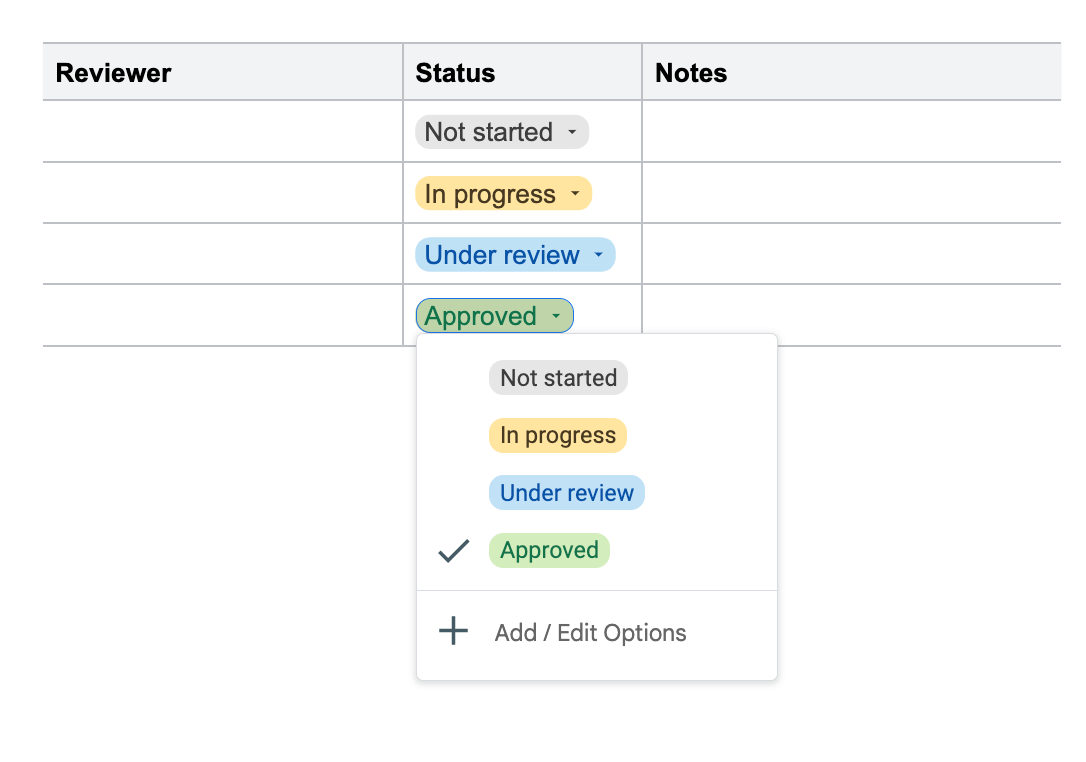
Review Tracker
The review tracker is similar to the product roadmap above. It has headings for reviewer, status, and notes. The status drop down includes not started, in progress, under review, and approved.
To use the review tracker, type @ then scroll down to building blocks and choose review tracker.
This building block inserts a table that can be used to keep track of projects or the status of different team members' work.
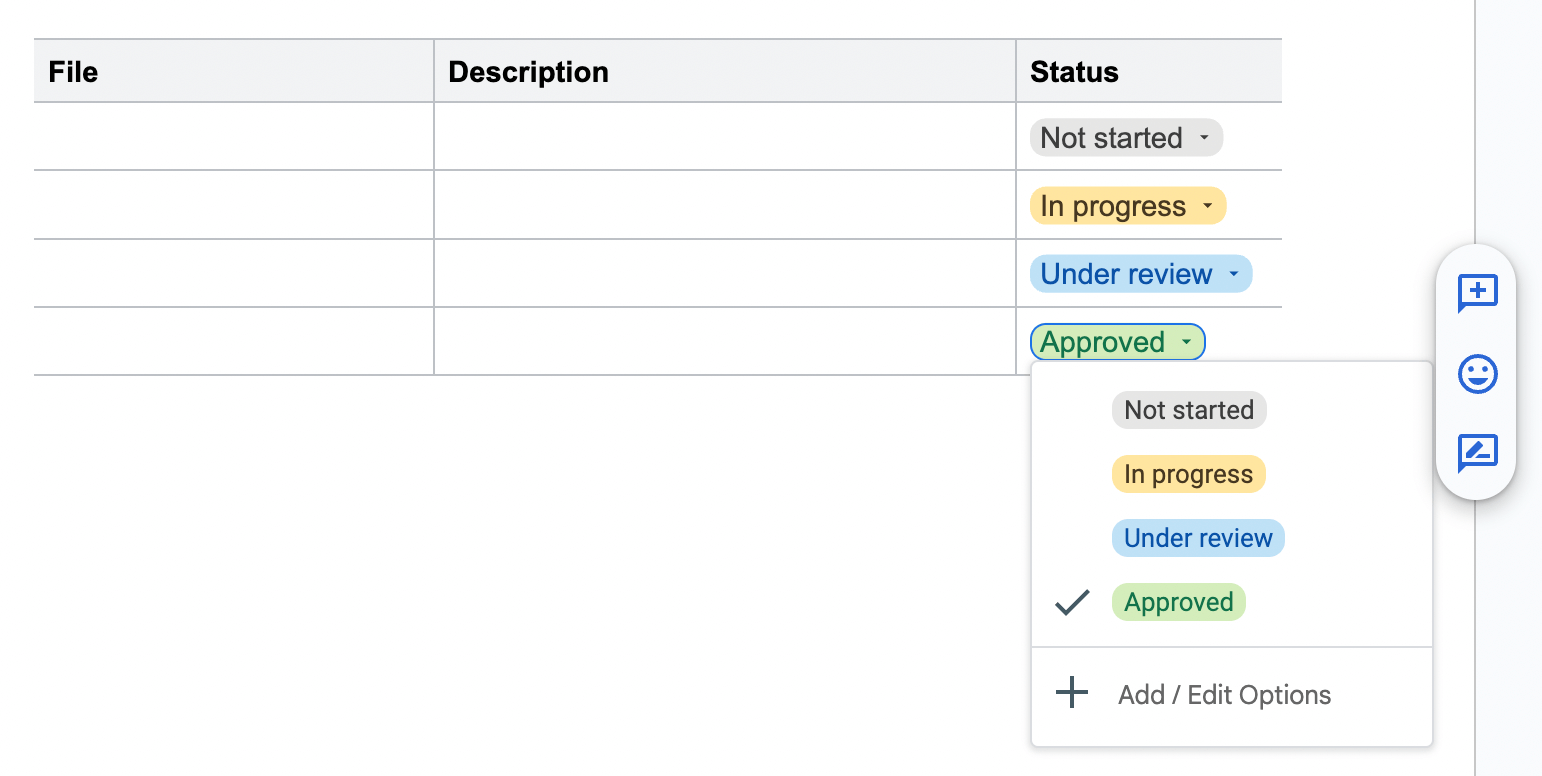
Project Assets
Project assets let you keep tabs on important files and where they are in the process of completion.
This one is hidden in the building blocks menu! To find it (as of publication of this post), you'll type @ and then use the arrow button next to the words "building blocks." Find project assets and choose it.
This adds a table with columns for file, description, and status. The status drop down includes not started, in progress, under review, and approved. You can add smart chips for the files under the file column.
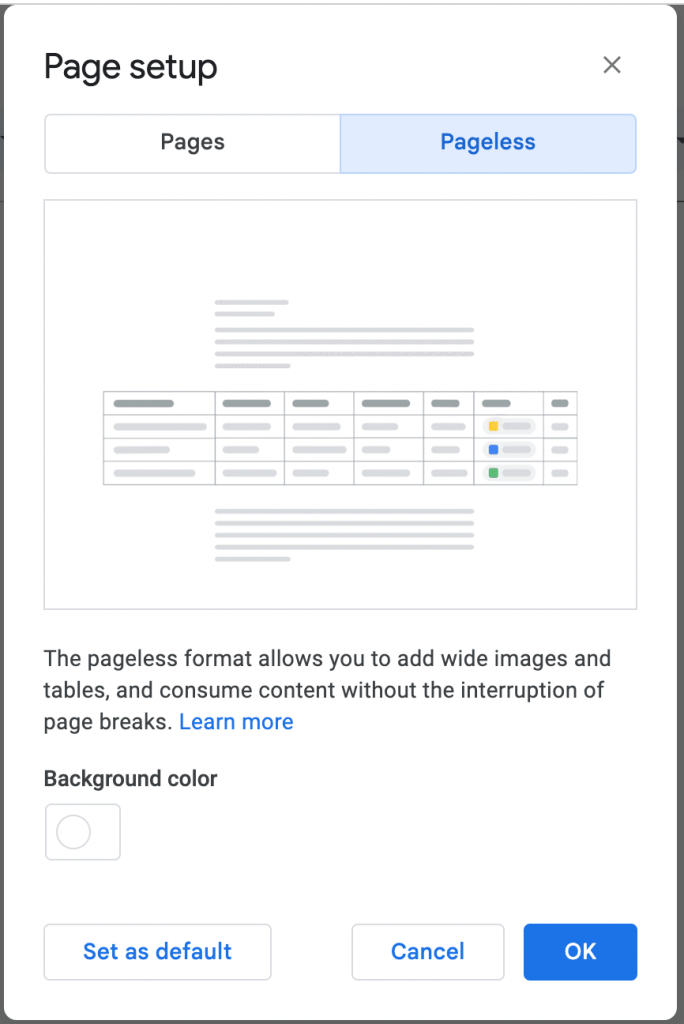
Pageless Layout
Pageless Layout removes the constraints of traditional page formatting and allows users to create continuous documents that can be viewed and edited as one long page. This feature is particularly useful for documents that are intended to be read online or on a mobile device.
Learn more: Change a document’s page setup: pages or pageless - Android - Google Docs Editors Help
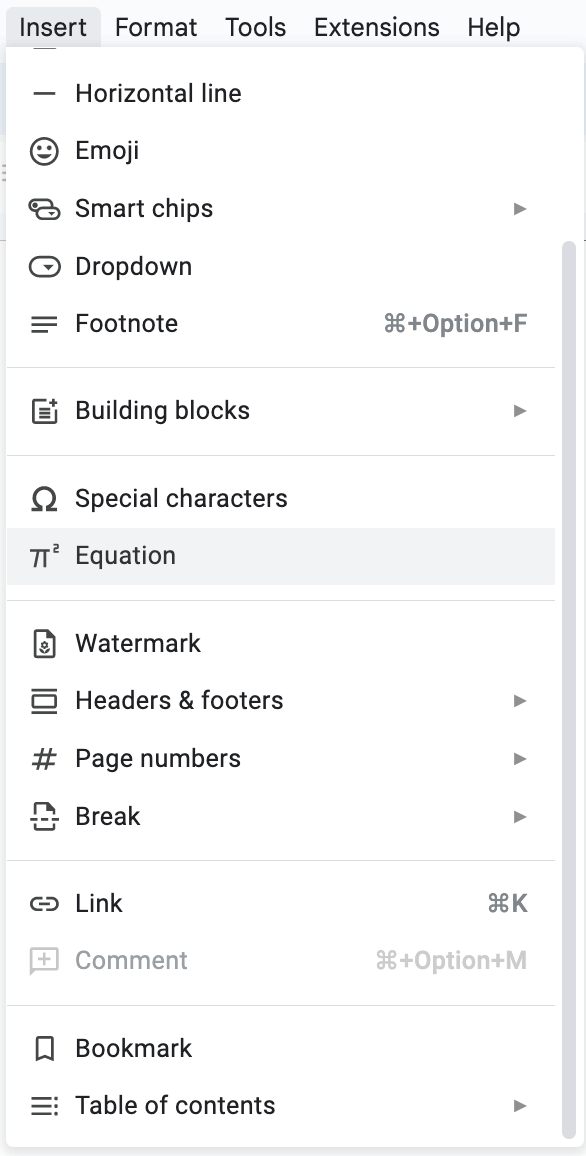
Insert an equation
Add complex mathematical equations to their documents. This feature is particularly useful for users who need to include mathematical equations in their work.
Learn more: Use equations in a document - Android - Google Docs Editors Help
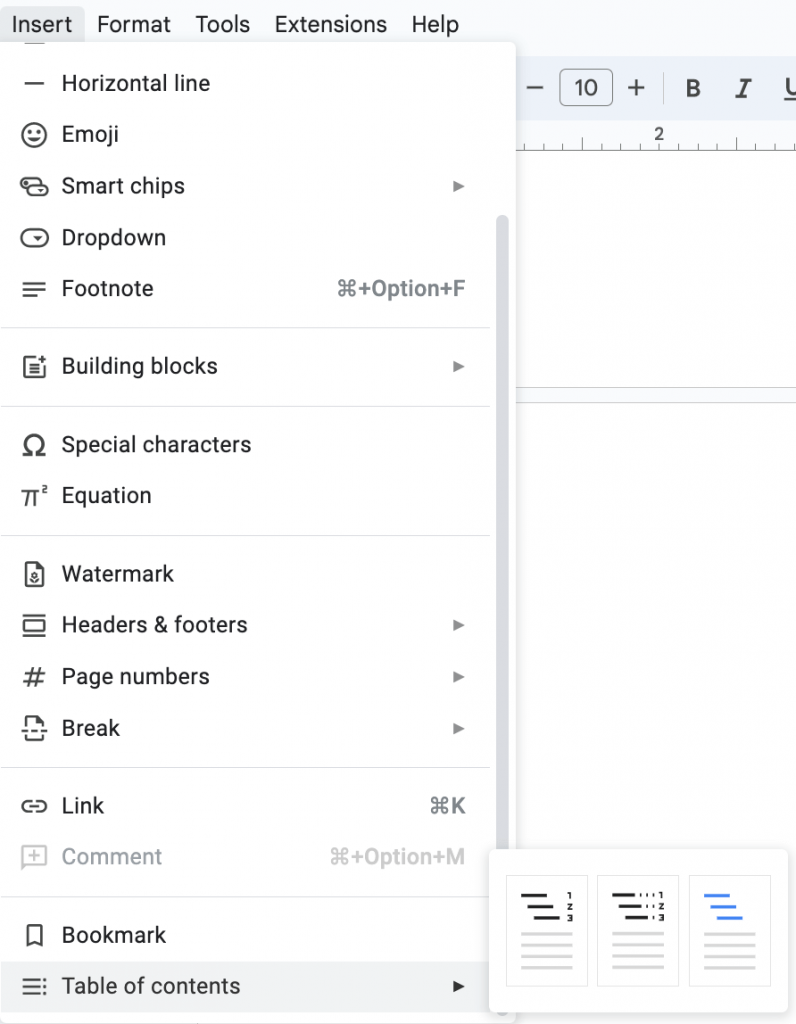
Add a Table of Contents
A Table of Contents help users navigate and organize their long documents. Google Docs automatically creates an outline based on your formatting. Once you have an outline you can insert a table of contents into your document.
Learn more: Add a title, heading or table of contents in a document - Computer - Google Docs Editors Help
What are your favorite features in Google Docs? How do you use them with your students or in your daily life? Share in the comments below!


Thanks for your sharing.
fadisdfişsçdf